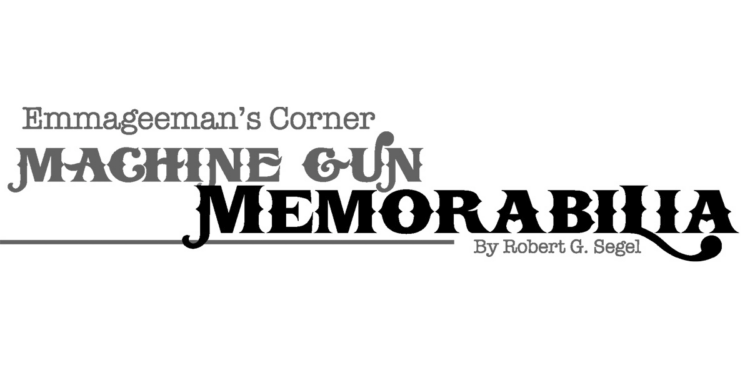By Rober G. Segel
Headquarters swallowtail flag for the World War I Czech 3rd Machine Gun Company, Yan Zhishka Regiment. Black felt with white cotton applications of a Maxim gun and the unit information with silver bullion fringe. The reverse has the red goblet battalion insignia. This regiment originally fought on the Russo-Austro-Hungarian front on the Austrian side. They were beaten by the Russians, captured, and they promised them their own country if they fought on the Russian side forming a force of some 60,000 men. They were eventually sent to Siberia and then fought against the Russian Bolsheviks on the Kalchak front in Siberia.
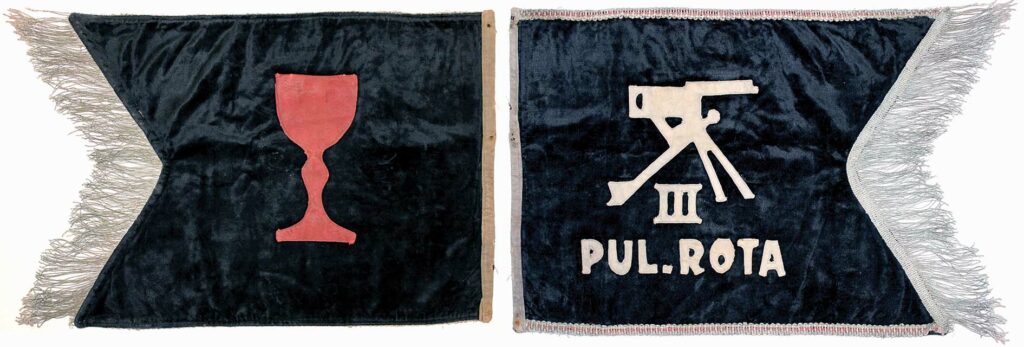
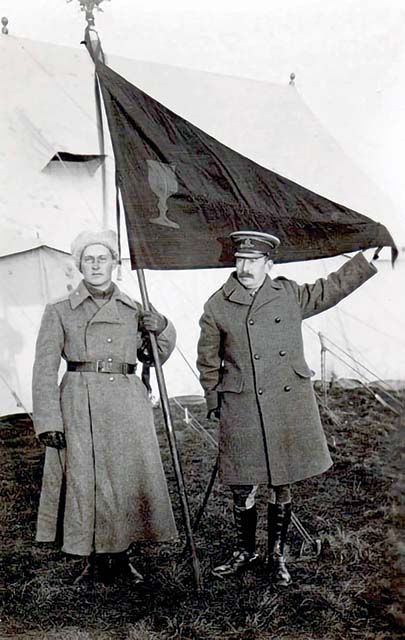
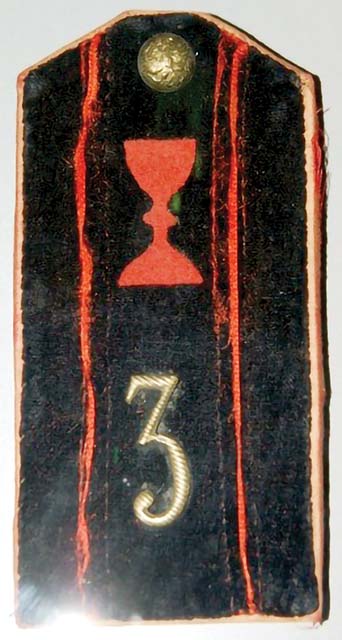
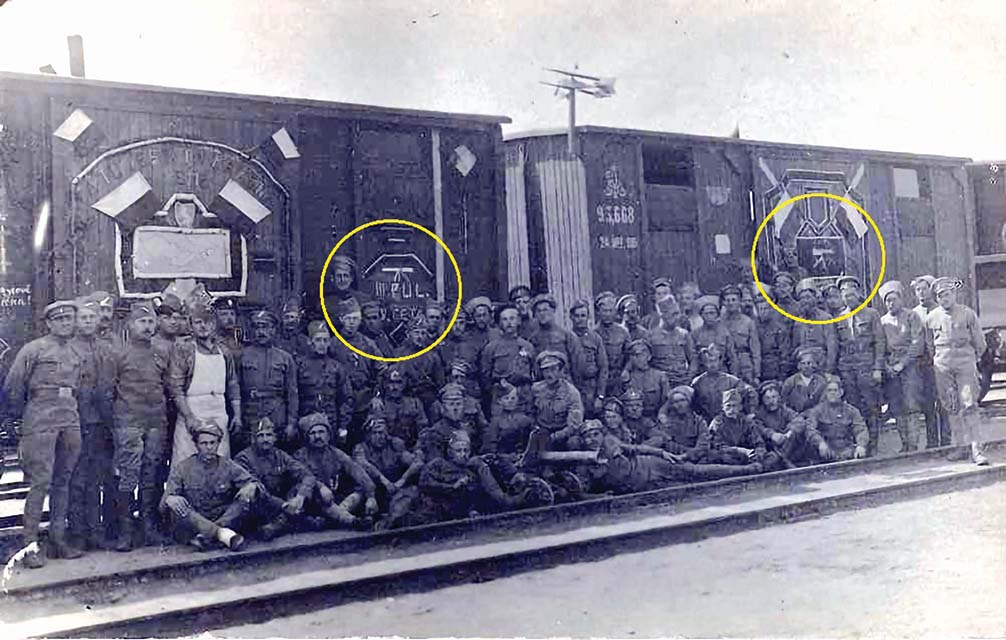
Nicely detailed German paperweight or desk ornament. A German Maxim MG 08 water-cooled machine gun on its sled mount with a ZF12 optical sight mounted approximately 6 inches long on a 7×3¾-inch black marble base. These were also used as rewards in shooting competitions in the interwar period.
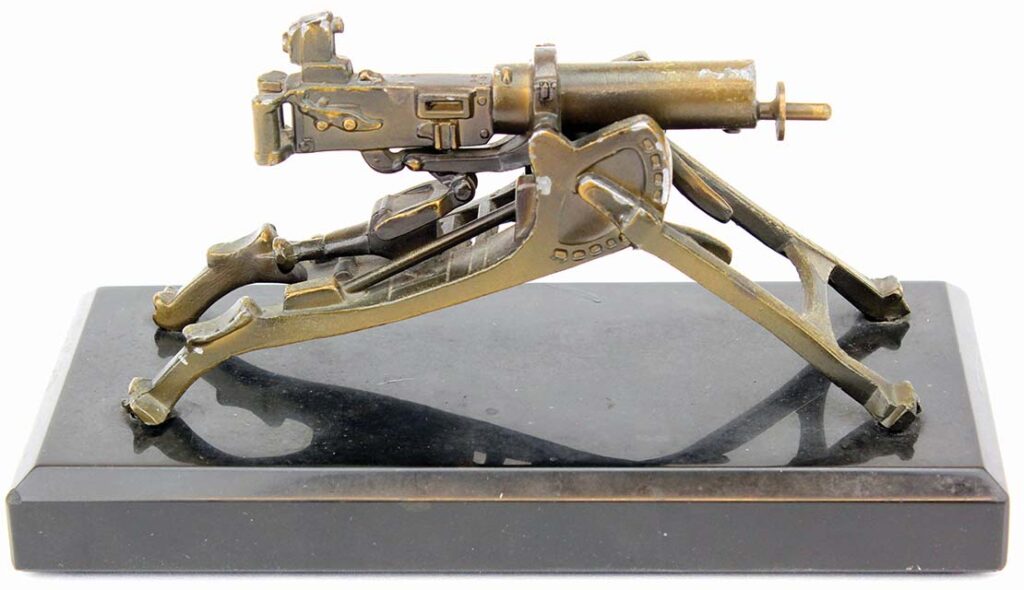
Shanghai Volunteer Corps Machine Gun Company drink coaster from the officer’s mess at the British legation. Marked on rear “Aynsley” over crown over “England.” Center is made of porcelain with the outer rim made of silver plate. The imagery details crossed Vickers surmounted with the “S.V.C.” (Shanghai Volunteer Corps) star to the top. In the center is a circular rendering of the 12 flags of the Shanghai international settlement. The bottom reads, “S.V.C, Machine Gun Company.” All SVC items are extremely rare as the Japanese destroyed everything pertaining to them when they fully captured the foreign section of Shanghai on December 8, 1941.
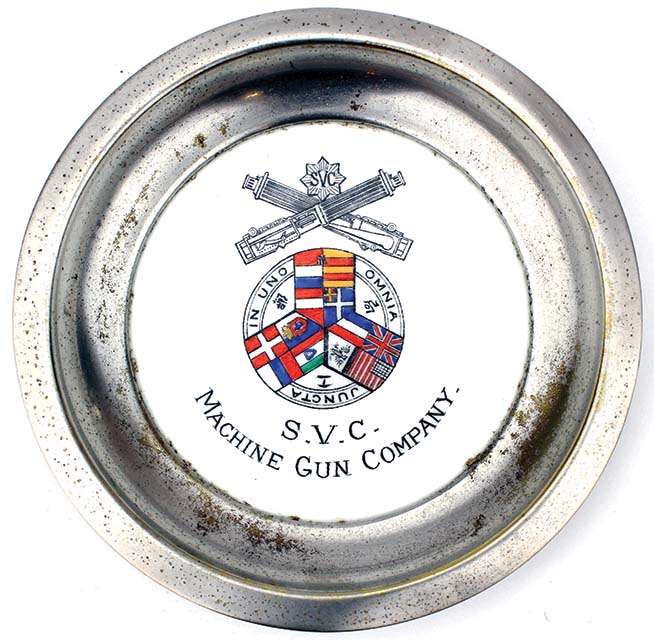
Handmade, hand-painted, plaster of Paris souvenir two-part ashtray. The back is tombstone-shaped and has as its central image the New Zealand Machine Gun Corps insignia consisting of the King’s crown over crossed Vickers with “NZ” below. The base says, “Egypt 1941.” Maker-signed “Romani.” The ash receptacle is at the front. This is a bit of a macabre wartime souvenir with the tombstone shape and the ashtray suggesting an “ashes to ashes” motif. New Zealand troops participated in several battles within Egypt including the First and Second Battles of El Alamein in 1942, which turned the tide of the North African wars and ended the Axis threat to Egypt and the Suez Canal.
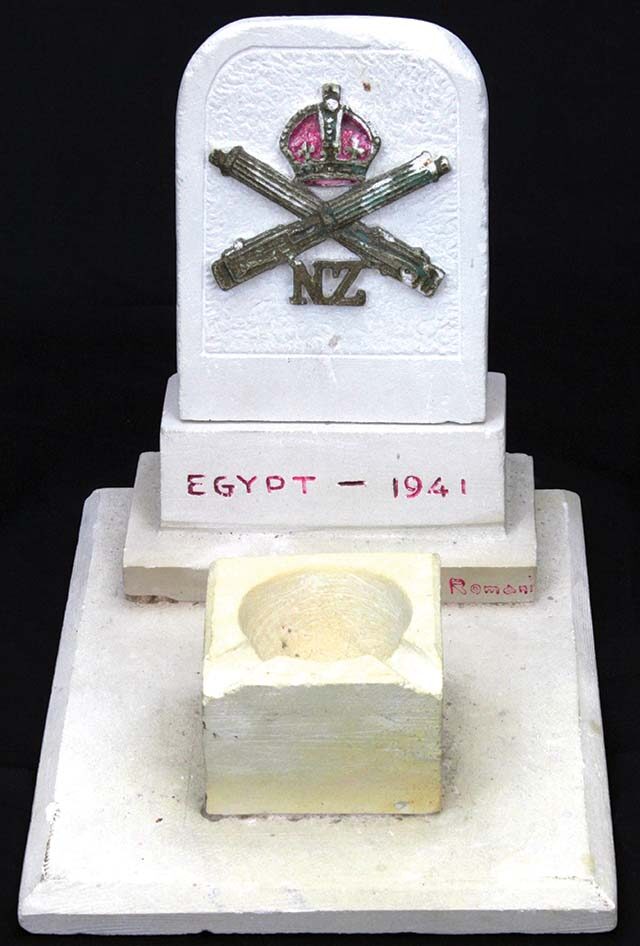
Trench-art style model of a Vickers medium machine gun rendered in brass. The base is the rear portion of a 1917-dated artillery shell and measures 5 inches in diameter probably from a QF 18-pounder. The gun sits on an Mk IV-type tripod head atop a machined column arising from the base. The gun measures 12 1/2 inches in length from the spade grips to the muzzle and features a fluted water jacket. The ladder sight can be raised or lowered, and the gun is adjustable for traverse and elevation.
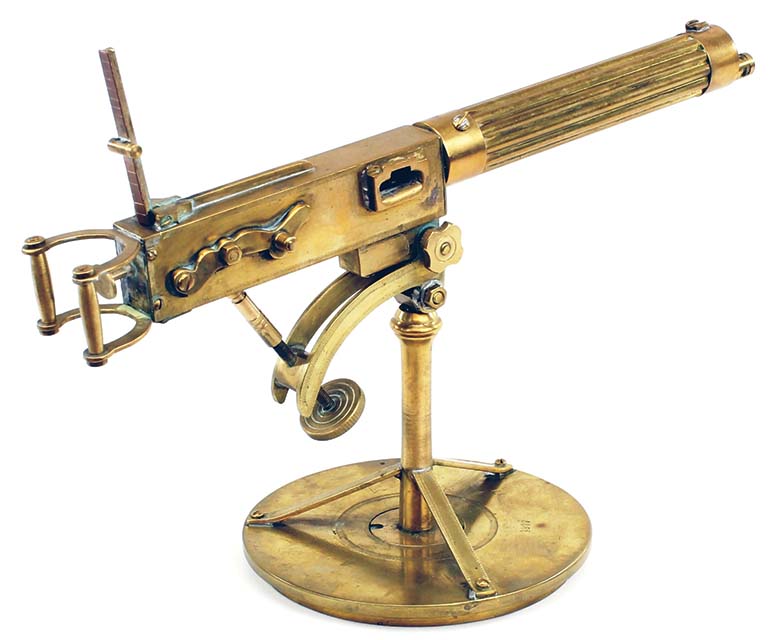
Imperial Austrian gold gilt and blue enamel lapel pin marked “MG SCH D 15” (Machine Gun Schutzen Regiment D 15 (k.u.k.)). This shooting regiment consisted mainly of boys 17 to 18 years old, mostly from the semi-Alpine region. Pin back, measuring approximately 25mm wide.
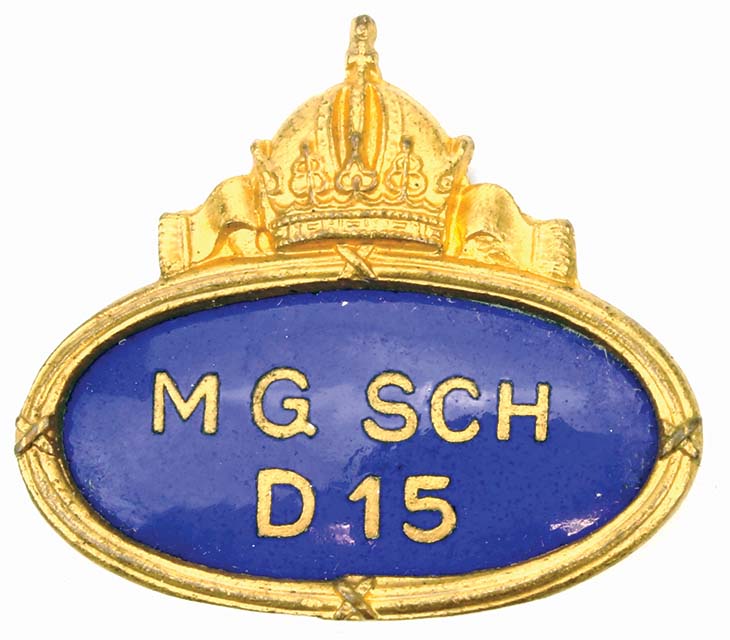
| This article first appeared in Small Arms Review V24N8 (Oct 2020) |



